
Unseasonal, sudden onset heat, like cold, is similarly not in a plant’s best interests. The pristine good looks of Agave ‘Blue Flame’ took a hit last week. Poor thing didn’t have time to develop a base coat and suffered a bad sunburn on a few leaves.

But only a couple feet away, in full sun, delicately pale Agave celsii var. albicans ‘UCB’ absorbed it all in stride.
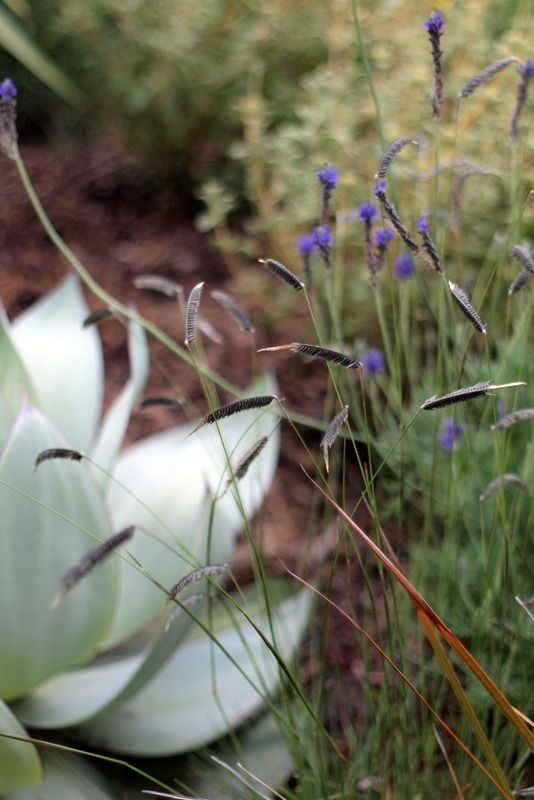
This New Zealand grass, Harpochloa falx, was planted before the heatocalypse began, possibly the worst conditions imaginable in which to introduce a plant to its new home, yet it seems to have weathered the sunstorm. And if it hasn’t, I’m definitely going back for more. Oddly enough, I’d been chasing down another New Zealand grass, Chionochloa flavicans, which is why I’ve been combing the grass aisles at local nurseries, where this beauty unexpectedly popped up. I finally ordered seed of chionochloa that, knock wood, is germinating nicely. But what a nerve-wracking enterprise seed-sowing can be during a heat wave.
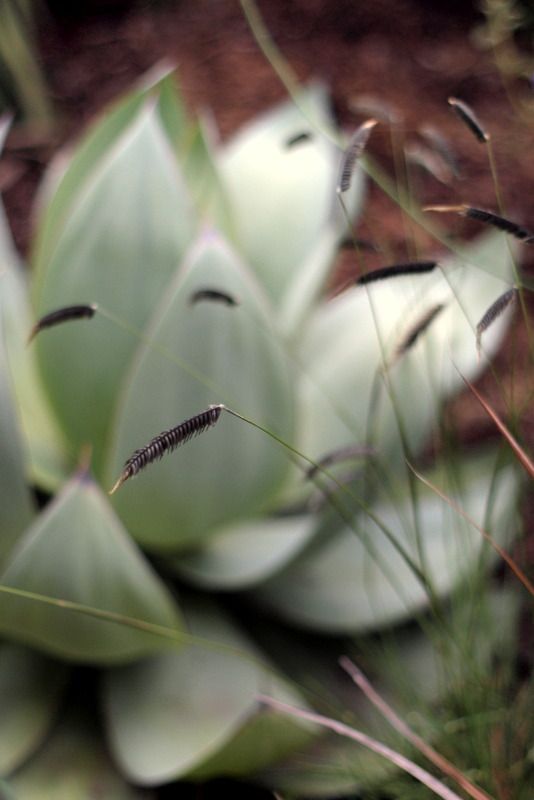
It’s very similar to the Eyebrow Grass, Bouteloua gracilis, which didn’t like my garden one bit and exited roots first fairly quickly.
So excited about this NZ grass, which is evergreen, with a name I might actually remember, reminding me as it does of both Harpo Marx and his brother’s famous eyebrows.
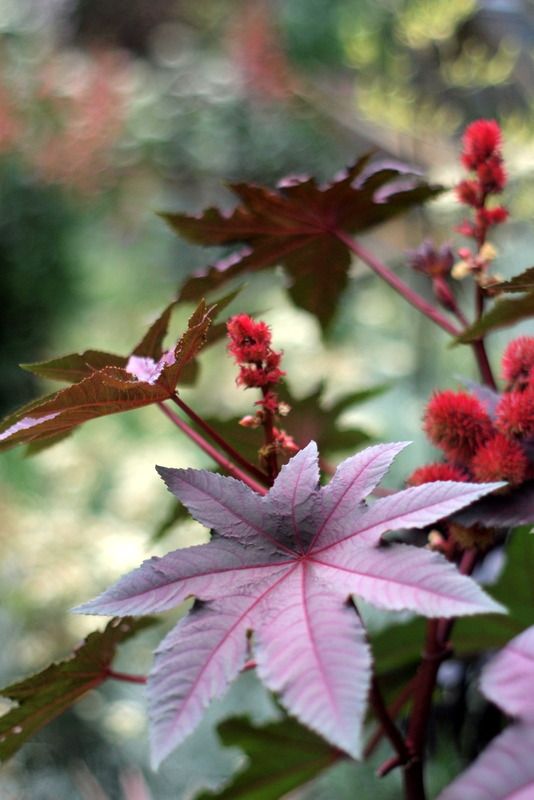
The castor bean plant shot up like Jack’s bean stalk, exulting in a punishing amount of sun.
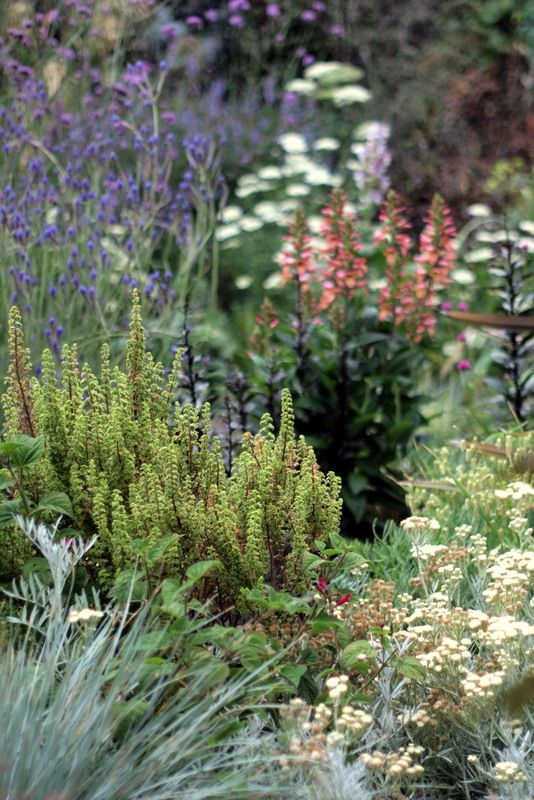

The bulk of the back garden is made up of tough, rough-and-ready plants that should stand up to whatever the weather has in mind (theoretically). Probably favoring leaves over flowers, it still brings in lots of aerial drama from pollinators. Seen in bloom here is lavender, adored by hummingbirds, bees, butterflies, night moths, all manner of winged creatures, with gaillardia, kangaroo paws, Senecio leucostachys, whose pale yellow flowers naturally age to brown.
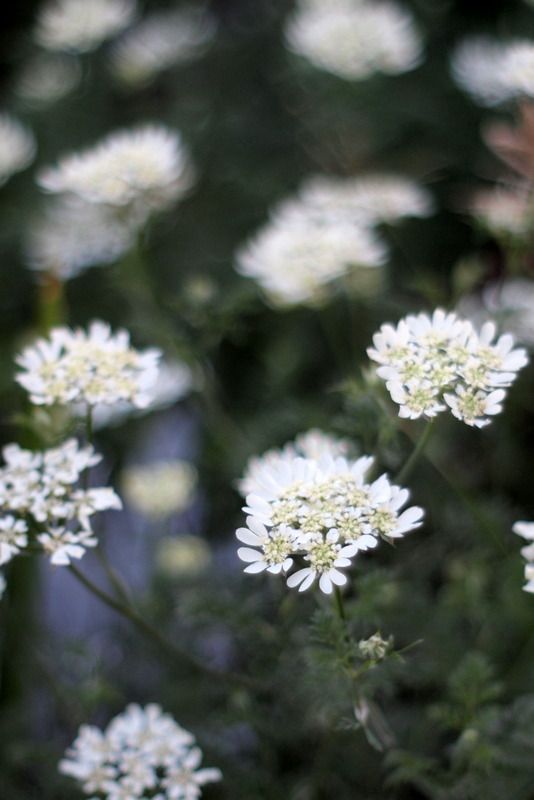
Amazing how much hot, dry wind a delicate thing like the annual Orlaya grandiflora can withstand. Its bloom will probably be over by June. Never one to chase the idea of a nonstop, summer-long flowerfest, I’m completely okay with flowers going in and out of bloom. Like savoring seasonal fruit and vegetables, for me it’s the changing rhythms that make a garden that much more exciting.
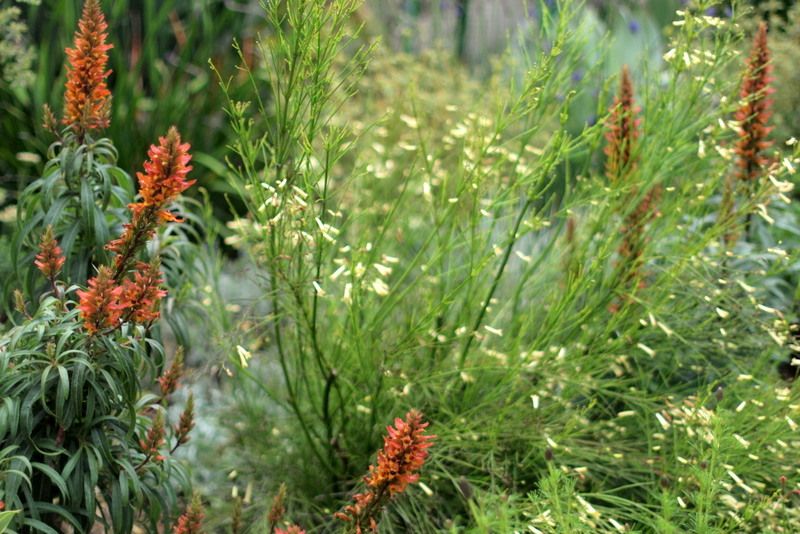
Some plants had me worried, like burnt ember-colored Isoplexis isabelliana and the digiplexis, all of which did fine. Nothing phases a russelia, yellow flowers on the right. I hand-watered the foxglove relatives all directly at their base, because they definitely showed some heat stress, which I also did for anything newly planted. Everything had already been deeply mulched, which keeps the soil cool.
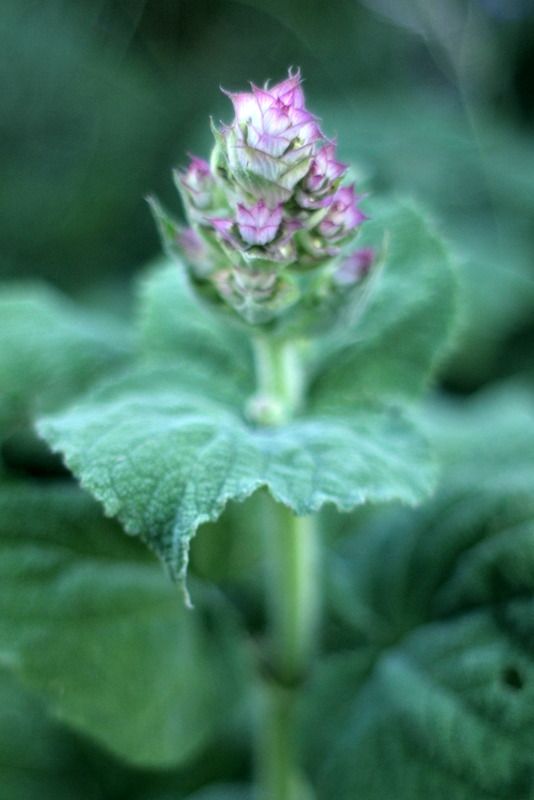
I wasn’t too sure about spring-planted clary sage either, another plant I hand-watered directly at its base, and so far it seems fine.
I’ve been trying for years to add this sage to my repertoire of self-seeders and feared I’d lost another chance.
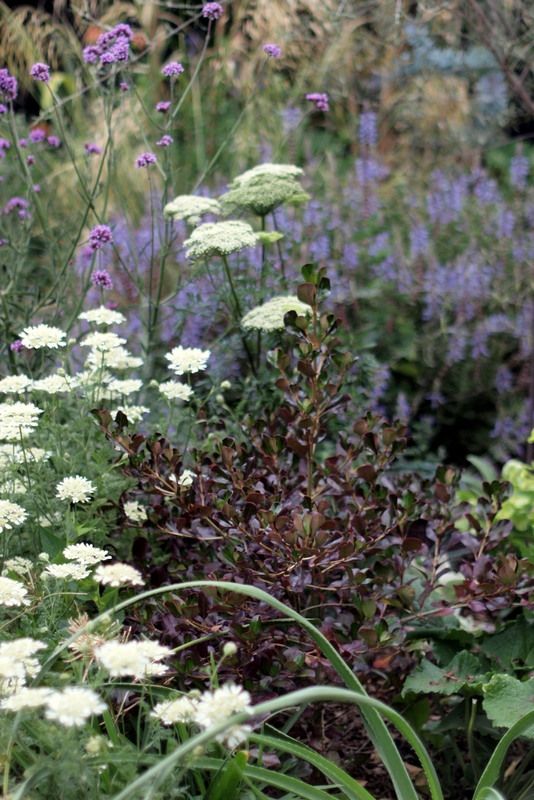
This Coprosma ‘Plum Hussy’ was planted last year and didn’t blink in the heat, even though I forgot to give it an extra drink.
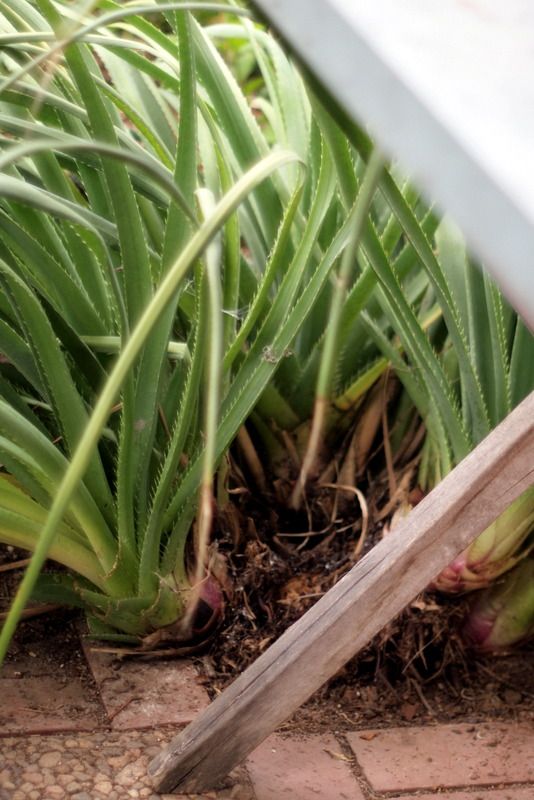
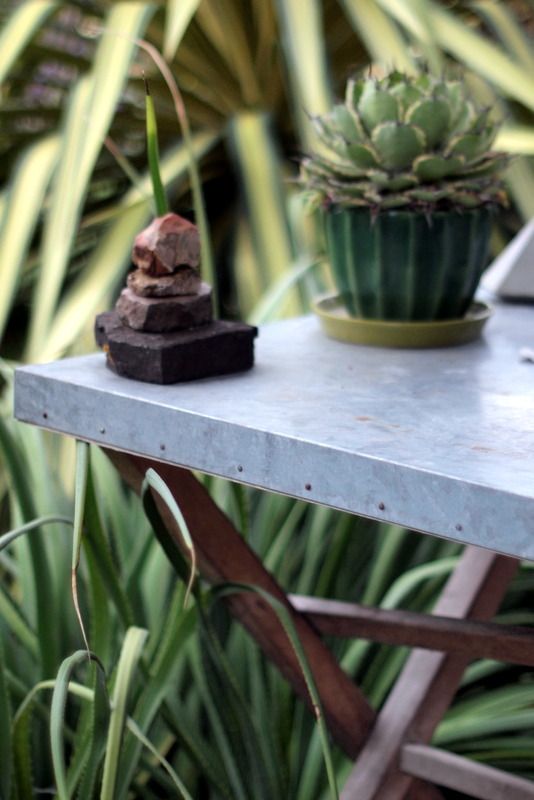
Sunday morning brought relatively cooler temps, and having been idled and literally made dizzy by the extreme heat, I was itching to get busy. Half of Eryngium pandanifolium was sprawling onto the terrace off the kitchen, snaking around our feet under the table. I can’t speak for everybody here, but I was prepared to live with these conditions, since I’m thrilled that this fantastic eryngo from South America likes my garden. But now that I’ve got a few seedlings for insurance, I’ll probably remove the main plant and plant something a little less intimidating. Yesterday I cleaned up old leaves and removed three big offsets, which were planted elsewhere, though I doubt they’ll survive. Like all eryngos, they hate root disturbance and are famously touchy about being moved. Worth a try anyway, rather than tossing them in the compost pile. That’s one of the divisions in the photo above with the coprosma.

March 2013, with the eryngo on the left, that surprised me by a) really, really liking my garden, and b) thereby swiftly increasing in size. Agave ‘Blue Flame’ can be seen, too, in better days. The mortared brick path on the right was in place when we bought the house. Instead of bricks and pavers on a bed of sand, I should just gravel in what’s left of the terrace, which is sinking below grade. I keep pulling the bricks out anyway to make room for more plants.
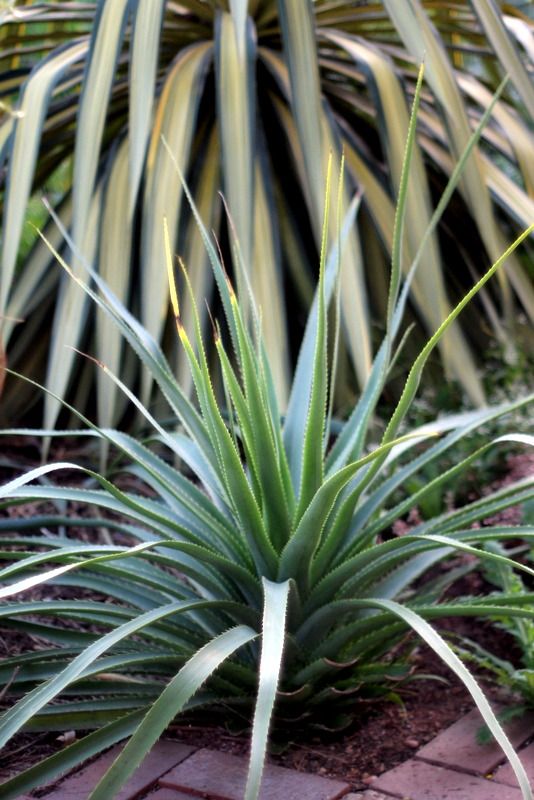
Which is what I did for the eryngo, removing some bricks in secret, of course. Seen here in May 2013, still very puya-esque in character.
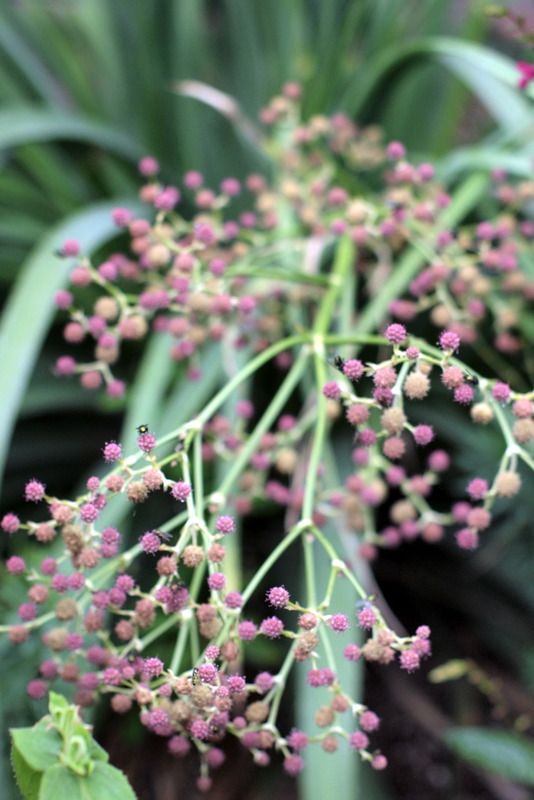
Detail of the eryngo’s 6-foot bloom stalk last August.
I’ve just started another promising eryngium from seed, another South American from Argentina, E. bracteatum, which has deep red, bottle brush-type flowers.
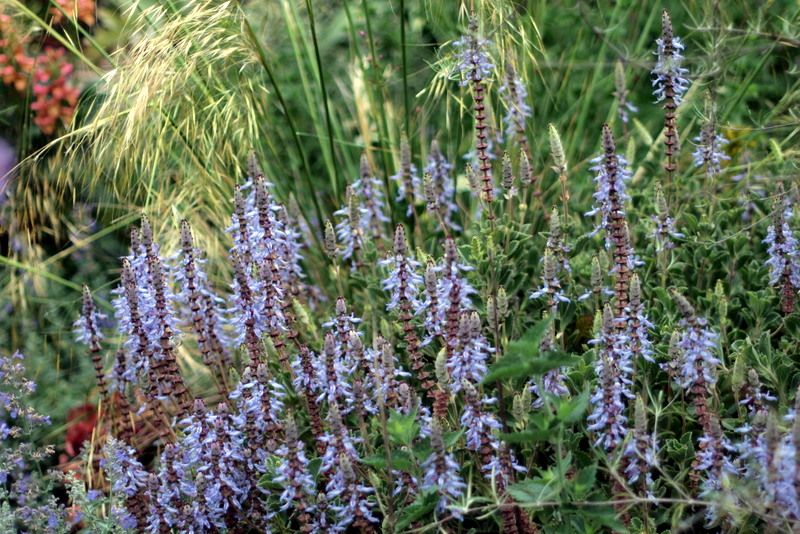
Plectranthus neochilus has been stunning this spring, happy with dry soil, overcast skies or extreme heat and strong sunshine. For hazy blue, I should just forego nepeta entirely and go with this plectranthus. The tight, uniform bloom is the stunning result of very harsh treatment. It’s a spreader, so I cut it back hard in winter.
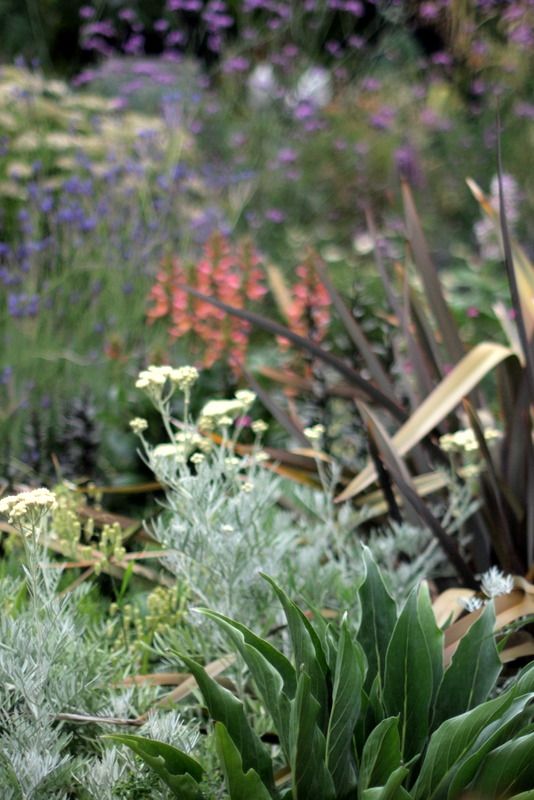
This Echium simplex, growing deep in a border, weathered the heat fine, but another one closer to the bricks suffered leaf burn.
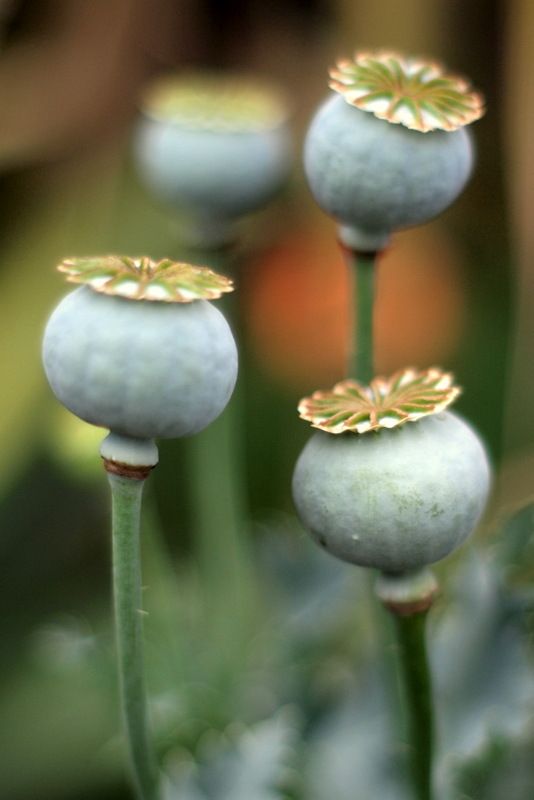
The poppies run to seed fast in extreme heat.
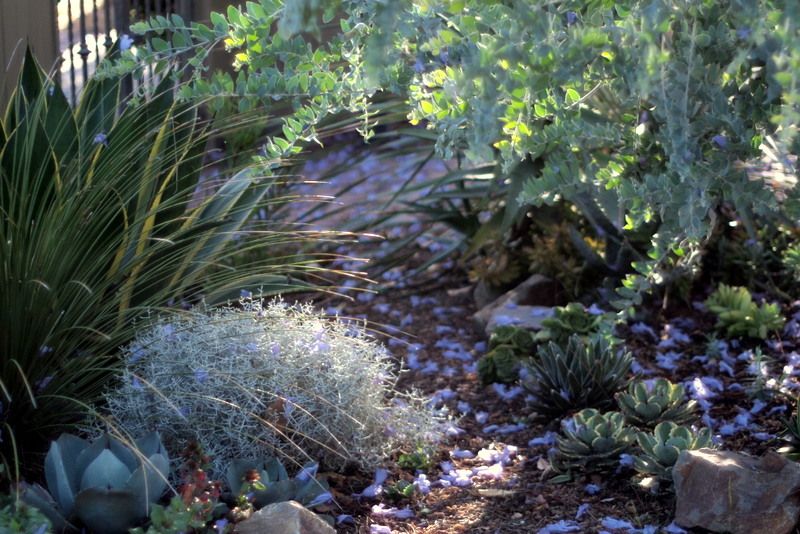
At the front of the house, the jacarandas’ normally sticky blooms had the texture of potato chips underfoot after a few minutes on hot pavement.

Another delicate one that withstood the worst of the heat wave. I will say this about monocarpic plants that die after blooming. They really, really give it their all. It was a pleasure, Melanoselinum decipiens.

Beautiful garden full of so much rare suburban varietal of plants. Absolutely love the the garden expansion (shhh…of brick removal…I can keep a secret!)for new plants! The extremely hot heatwave got me running around to repair or replace drip system lines! Definitely no fun.
I thought I’d stayed on top of the heat wave but checks yesterday and today showed me that there was more damage than I’d first realized. Still, I was also pleased by the number of things that sailed through the misery, including some relatively recent transplants. I’m trying to chalk up the losses to lessons learned and identify better replacements for what is likely to be one tough summer. Best wishes for a dribble of rain tomorrow – the forecast is a 20% chance!
Very amazing garden. Eryngium pandanifolium is a native from my state, Rio Grande o Sul,the southernmost state in Brazil (http://en.wikipedia.org/wiki/Rio_Grande_do_Sul#Climate). Our climate is noticeable cooler than Southern California climate (much cooler, indeed), so, is better that you take some care with your eryngo. We called this plant caraguata do banhado, which means something like a swampy agave, so give it a lot of water as you can.
Garden looks great!
Beautiful, Beautiful, Beautiul! You know, I think Xera here in Portland had that Chionochloa for sale last year…and probably will again this year…if you happen to be in the area soon, I could inquire for you 😉
@Annette, as I get older I need to pick a design and stick with it. I’m getting too old to be hauling bricks in and out of the back garden. I hope your losses were minimal and those drip lines are back on line. Should be smooth sailing, weather-wise, for a week or so.
@Kris, that’s always in the back of my mind these days, that conditions are only going to get tougher. Didn’t hear about the possibility of rain tho!
@João Inácio, I’m so glad you commented with such a wealth of local info. From what you write and what I’ve read, I’m mystified that this eryngo is growing so strongly here. Your link describes a beautiful country, which I enjoyed reading with my coffee this morning.
@Hoov, I bet your roses are already getting ready for the next flush.
@Scott, if that’s true, I’m keeping my eyes open in July. I’d love to nab a couple.